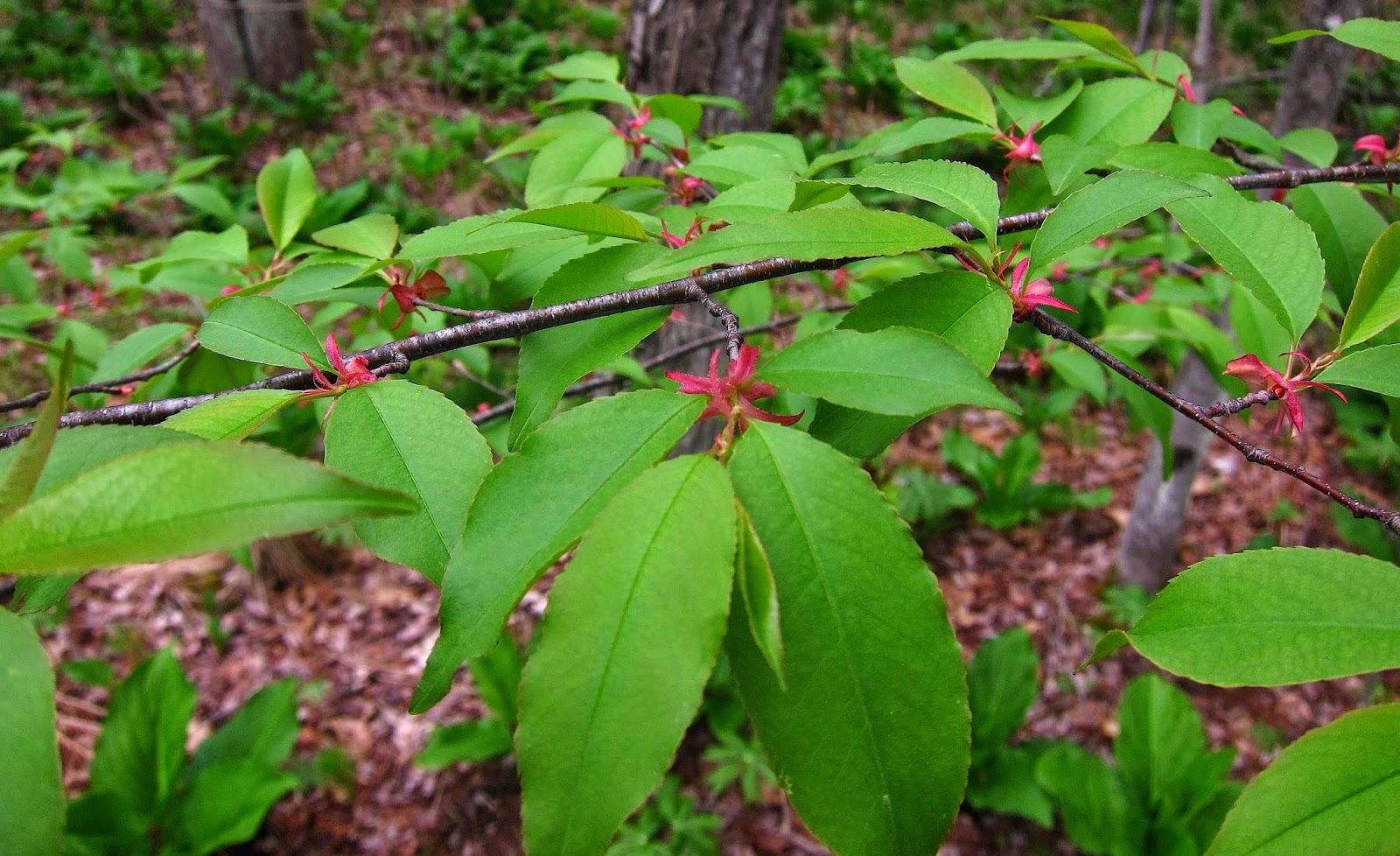A string of summer-warm days has released the floodgates holding the wildflowers back this otherwise cold dark spring. Although it was threatening rain all day today, the weather continued shirt-sleeve warm, so I hurried out to Bog Meadow Nature Trail, hoping to catch up with some of the flowers that are starting to bloom all at once.
The first plant to catch my eye was not, strictly speaking, a flower, although I think it would be fair to say that this Woodland Horsetail (Equisetum sylvaticum) was blooming in its own way. It was shedding spores, anyway, from that cone-like structure topping its stalk that was ringed with feathery branches.
In the same damp area nearby were blooming these tiny little popcorn-ball flowers of Dwarf Ginseng (Panax trifolium).
Sessile-leaved Bellworts (Uvularia sessilifolia) were crowding the bank of a tiny stream that follows the path of this nature trail.
Where the stream spread out to create a wide marshy area, spectacular clumps of Marsh Marigold (Caltha palustris) were in their glory.
Frothy wands of Foamflower (Tiarella cordifolia) were just beginning to open their bright-white florets.
This crowding clump of Miterwort (Mitella diphylla) looked especially pretty silhouetted against the dark water.
The same could be said for these dainty Starflowers (Trientalis borealis), backed by the dark wood of an old railroad tie, a remnant from this nature trail's historical function as a railway bed.
The flowers of Goldthread (Coptis trifolia) are really only about half the size of the Starflowers pictured above, but I posted their photo enlarged, the better to show their interesting structure. What look like white petals are actually sepals, while those tiny yellow jelly curls are, I believe, the flower's nectaries. The long green spindles are pistils, the numerous white filaments are the stamens.
Where the woods opens up to let more sunshine in, the trailside was littered with masses of pretty Dog Violets (Viola conspersa), distinguished from the Common Blue Violet by their leaf-bearing stems and the sharply pointed ("dog toothed") stipules around the stem joints.
Almost as numerous at another spot along the trail were these very small white violets, probably the Northern White Violet (Viola pallens), although they could also be the Sweet White Violet (V. blanda). Every year I try to distinguish these two equally small white violets, and every year I fail to remember the difference.
When I first spied this white-flowered trillium along the path, I expected that it would be the Nodding Trillium (Trillium cernuum). But a closer look at that deep red ovary and those anthers with no discernible filaments convinced me that this must be the white variety of the Red Trillium (T. erectum).
Further along the trail I did find Nodding Trillium with its much paler ovary and longer filaments holding the anthers. It certainly nods beneath the leaves, dangling from its downward bending stem. But so does T. erectum dangle down. These two could be easily confused. T. cernuum, however, is far less common than T. erectum, and is feared to be disappearing from its former range, so I was happy to find such a thriving patch of them as I did today.
Almost invisible among other grasses and sedges was this cluster of tiny Hairy Woodrush (Luzula acuminata) flowers. Bog Meadow Trail is the only place I have ever found these diminutive blooms, but then again, they would be very easy to overlook.
A close look at the leaves of Hairy Woodrush makes it obvious how this plant got its name.
There were no visible flowers on this small shrub, but its cherry-red bud scales indicate it must be some kind of cherry tree. I scratched a twig and the acrid smell of its inner wood confirmed my guess. Even without flowers, it certainly was pretty.
Not so pretty, perhaps, but very interesting! This old stump was covered with an orange lumpy slimy goo that I recognized immediately from similar stuff I had seen several years before. Thanks to mycologists at the Cornell Mushroom Blog, I now know that this substance is produced by a yeast Cryptococcus macerans that feeds on the sugary sap of wood. You can read all about it (and see even more vivid photos of it), by clicking on the name of the blog mentioned above.

















7 comments:
Such beauty and variety! Thank you for sharing!
Boy...this takes me back :) I can close my eyes and picture all that you have shared on this post, Jackie and it makes my heart smile to do so.
Taking a look at that first Trillium cernuum, I have to wonder if that isn't a hybrid expressing some genes from a T. erectum. The red ovary and more sessile-looking anthers says T. erectum but the white petals and their reflexed nature, and the drooping fashion of the flower says T. cernuum. I've seen the white colored form of T. erectum plenty before and what you have there strikes me as something quite different and very suspicious of some back crossing!
A wonderful walk in the woods. We have most but not all of those blooming here, or they will be soon.
Nice post! And your info about the "orange goo" was timely! I just had found this on several trees (all Ostrya) which had been worked over by yellow-bellied sapsuckers; but I had not researched into what the pinkish-orange goo might be. Thanks for saving me some work!
Nice catch in the cycle of the Woodland Equisetum, and I am jealous of the Luzula!
Beautiful photos! the petals on all of the "white" T. erectum I've seen aren't as stark white as those in your picture; they've all had a greenish or yellowish cast.
Thank you, dear readers, for all your thoughtful comments. What an interesting possibility A. L. Gibson raises! And Woody seems to confirm with his observations. I wonder if such hybridizing of trilliums has been documented?
Post a Comment